From the Coffee Belt to your Cup!
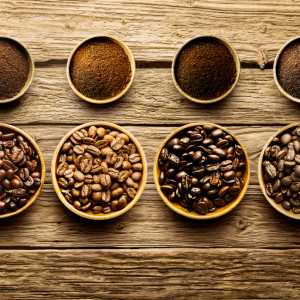
The Coffee Belt is the broad swathe of our planet where coffee is grown. It stretches eastwards from the western America to east Asia and is roughly bounded north and south by the Tropics of Cancer and Capricorn.
Annual production of coffee begins with coffee cherries being picked by hand. The degree of ripeness at the time of picking is a significant factor in the final coffee's taste, so careful selection is crucial.
The cherries then undergo one of three initial processing methods: Dry, Wet or Semi-dry.
Dry or "natural" processing is the traditional method The cherries are cleaned and sun-dried before being separated usually by winnowing with a large sieve. The ripe cherries are dried in the sun for up to one month to bring them to between 10% and 12% moisture content.
Wet or "washed" processing makes use of significant quantities of water and requires some expensive equipment. It is often used by co-operatives; several farmers jointly buy the equipment and pool their coffee for processing. Much of the outer fruit is removed by a machine that pushes the cherries through a screen under water. Remnants of the outer fruit on the beans are then removed during a one to two day period of fermentation and washing before the beans are sun dried.
The third process, Semi-dry, is used in Brazil and Indonesia. The outer skins of the cherries are removed using locally-built machines to leave a layer of mucilage around each bean. One day later, the mucilage is washed off and the beans carefully sun dried.
Whichever processing method has been used, at this point, the dry coffee is sent to a central location for hulling by machine which removes remaining outer layers of organic material from around the coffee beans, followed by polishing, cleaning, sorting and grading of the beans.
The next stage in the journey to your cup is for the green coffee to be bagged in jute sacks and transported for sale to roasters and wholesalers throughout the world.
The roasting process is both an art and a science. The roasting temperature determines whether Light, Medium or Dark coffee results, each with its own strengths and virtues.
After roasting, the beans are ground to the desired size before being brewed for the necessary time in hot water. And finally, with the used coffee grounds separated, delicious hot liquid coffee is ready for your Cup!
Annual production of coffee begins with coffee cherries being picked by hand. The degree of ripeness at the time of picking is a significant factor in the final coffee's taste, so careful selection is crucial.
The cherries then undergo one of three initial processing methods: Dry, Wet or Semi-dry.
Dry or "natural" processing is the traditional method The cherries are cleaned and sun-dried before being separated usually by winnowing with a large sieve. The ripe cherries are dried in the sun for up to one month to bring them to between 10% and 12% moisture content.
Wet or "washed" processing makes use of significant quantities of water and requires some expensive equipment. It is often used by co-operatives; several farmers jointly buy the equipment and pool their coffee for processing. Much of the outer fruit is removed by a machine that pushes the cherries through a screen under water. Remnants of the outer fruit on the beans are then removed during a one to two day period of fermentation and washing before the beans are sun dried.
The third process, Semi-dry, is used in Brazil and Indonesia. The outer skins of the cherries are removed using locally-built machines to leave a layer of mucilage around each bean. One day later, the mucilage is washed off and the beans carefully sun dried.
Whichever processing method has been used, at this point, the dry coffee is sent to a central location for hulling by machine which removes remaining outer layers of organic material from around the coffee beans, followed by polishing, cleaning, sorting and grading of the beans.
The next stage in the journey to your cup is for the green coffee to be bagged in jute sacks and transported for sale to roasters and wholesalers throughout the world.
The roasting process is both an art and a science. The roasting temperature determines whether Light, Medium or Dark coffee results, each with its own strengths and virtues.
After roasting, the beans are ground to the desired size before being brewed for the necessary time in hot water. And finally, with the used coffee grounds separated, delicious hot liquid coffee is ready for your Cup!
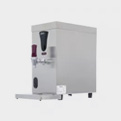 Counter top boilers
Counter top boilers
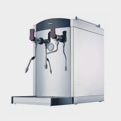 Steam boilers
Steam boilers
 Under counter
Under counter
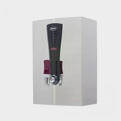 Wall mounted
Wall mounted
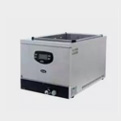 Sous vide
Sous vide
 Filters
Filters
 Spare parts
Spare parts













